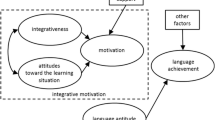Abstract
Students' misconceptions of shadows have been studied previously. However, most studies were conducted before and/or after formal instruction. They did not provide a description of students' conceptual change during the learning process. The aim of the current research was to fill this gap and to identify students' changes in conception about diffused shadows during Nussbaum and Novick's suggested sequence of teaching (Nussbaum, J., and Novick, S. Instructional Science 11: 183–200, 1982a; Nussbaum, J., and Novick, S. A study of conceptual change in the classroom. Paper presented at the Annual Meeting of the National Association for Research in Science Teaching, Lake Geneva, Chicago, 1982b). Class discussions at different stages of the teaching sequence as well as pre-and posttests of six 10th-grade students were analyzed. The identified misconceptions were divided into concepts concerning the following: (1) the nature of light, (2) the light source causing the shadow, (3) the object's characteristics, (4) the screen, and (5) the nature of the shadow. The analysis revealed that (a) students' “entering” ideas were unstable, (b) the language and materialistic view of light influenced students' ideas, (c) students' ideas were influenced by the group concepts, (d) students' interpretation of demonstrations and experiments was problematic, (e) students' ideas of the nature of light influenced their understanding, and (f) the use and interpretation of diagrams of light rays were problematic. By analyzing small-group discussions at different stages of the teaching sequence, we increased our understanding of students' conceptual change processes of diffused shadow mechanism.
Similar content being viewed by others
References
Apelman, M. A. (1984). Critical barriers to the understanding of light and color. In Anderson, C. W. (Ed.), Observing Science Classrooms: Observing Science Perspectives From Research and Practice, Association for the Education of Teachers in Science Yearbook, Columbus, OH.
Bendall, S., Goldberg, F., and Galili, I. (1993). Prospective elementary teachers' knowledge about light. Journal of Research in Science Teaching 30: 1169-1187.
Chi, M. T. H. (1992). Conceptual change within and across ontological categories: Examples from learning and discovery in science. In Giere, R. (Ed.), Cognitive Models of Science: Minnesota Studies in the Philosophy of Science, University of Minnesota Press, Minneapolis, MN, pp. 129-186.
Chi, M. T. H., Slotta, J. D., and de Leeuw, N. (1994). From things to processes: A theory of conceptual change for learning science concepts. Learning and Instruction 4: 27-43.
Clement, J. (1987). The use of analogies and anchoring intuitions to remediate misconceptions in mechanics. Paper presented at the 68th Annual Meeting of the American Educational Research Association, Washington, DC, April 20-24.
Feher, E., and Rice, K. (1988). Shadows and anti-images: Children's conceptions of light and vision. II. Science Education 72: 637-649.
Fischer, H. (1994). Physiklernen: Eine Herausforderung fuer die Unterrichtsforschung [Physics Learning A demanding Task for Instructional Research] (Frankfurt: Lng).
Galili, I., and Hazan, A. (2000). Learners' knowledge in optics: Interpretation, structure and analysis. International Journal of Science Education 22: 57-88.
Guba, E., and Lincoln, Y. S. (1989). Fourth Generation Evaluation, Sage, Beverly Hills, CA.
Guesne, E. (1985). Light. In Driver, R., Guesne, E., and Tiberghien, A. (Eds.), Children's Ideas in Science, Open University Press, Milton Keynes, U.K., pp. 10-32.
Hewson, P. W., and Thorley, N. R. (1989). The condition of conceptual change in the classroom. International Journal of Science Education 11: 541-553.
Langley, D., Ronen, M., and Eylon, B.-S. (1997). Light propagation and visual patterns: Preinstruction learners' conceptions. Journal of Research in Science Teaching 34: 300-424.
Latour, B., and Woolgar, S. (1986). Laboratory Life: The Construction of Scientific Facts, 2nd ed., Princeton University Press, Princeton, NJ.
McCloskey, M. (1983). Naive theories of motion. In Gentner, D., and Stevens, A. L. (Eds.), Mental Models, Erlbaum, Hillsdale, NJ, pp. 299-323.
Nussbaum, J., and Novick S. (1982a). Alternative frameworks, conceptual conflict, and accommodation: Toward a principled teaching strategy. Instructional Science 11: 183-200.
Nussbaum, J., and Novick, S. (1982b). A study of conceptual change in the classroom. Paper presented at the Annual Meeting of the National Association for Research in Science Teaching, Lake Geneva, Chicago.
Petri, J., and Niedderer, H. (1998). A learning pathway in high-school level quantum atomic physics. International Journal of Science Education 20: 1075-1088.
Pfundt, H., and Duit, R. (1994). Students' Alternative Frameworks and Science Education, Institute for Science Education at the University of Kiel, Kiel, Germany.
Posner, G. J., Strike, K. A., Hewson, P. W., and Gertzog, W. A. (1982). Accommodation of a scientific conception: Toward a theory of conceptual change. Science Education 66: 211-227.
Reiner, M., Slotta, J. D., Chi, M. T. H., and Resnick, L. B. (2000). Naive physics reasoning: A commitment to substance-based conceptions. Cognition and Instruction 18: 1-34.
Roth, W.-M., MacRobbie, C. J., Lucas, K. B., and Boutonné, S. (1997). Why may students fail to learn from demonstrations? A social practice perspective on learning in physics. Journal of Research in Science Teaching 34: 509-533.
Slotta, J. D., and Chi, M. T. H. (1996). Understanding constraint-based processes: A precursor to conceptual change in physics. In Cottrell, G. W. (Ed.), Proceedings of the Eighteenth Annual Conference of the Cognitive Science Society, Erlbaum, Mahwah, NJ, pp. 306-311.
Smith, J. P., III, di Sessa, A. A., and Roschelle, J. (1993). Misconceptions reconceived: A constructivist analysis of knowledge in transition. Journal of the Learning Sciences 3: 115-163.
Solomon, J. (1987). Social influences on the construction of pupils' understanding of science. Studies in Science Education 14: 63-82.
Stavy, R. (1991). Using analogy to overcome misconceptions about conservation of matter. Journal of Research in Science Teaching 28: 305-313.
Author information
Authors and Affiliations
Rights and permissions
About this article
Cite this article
Eshach, H. Small-Group Interview-Based Discussions About Diffused Shadow. Journal of Science Education and Technology 12, 261–275 (2003). https://doi.org/10.1023/A:1025080923027
Issue Date:
DOI: https://doi.org/10.1023/A:1025080923027




